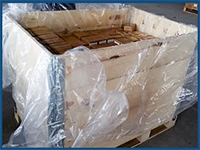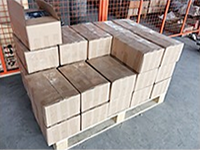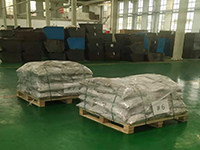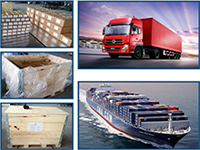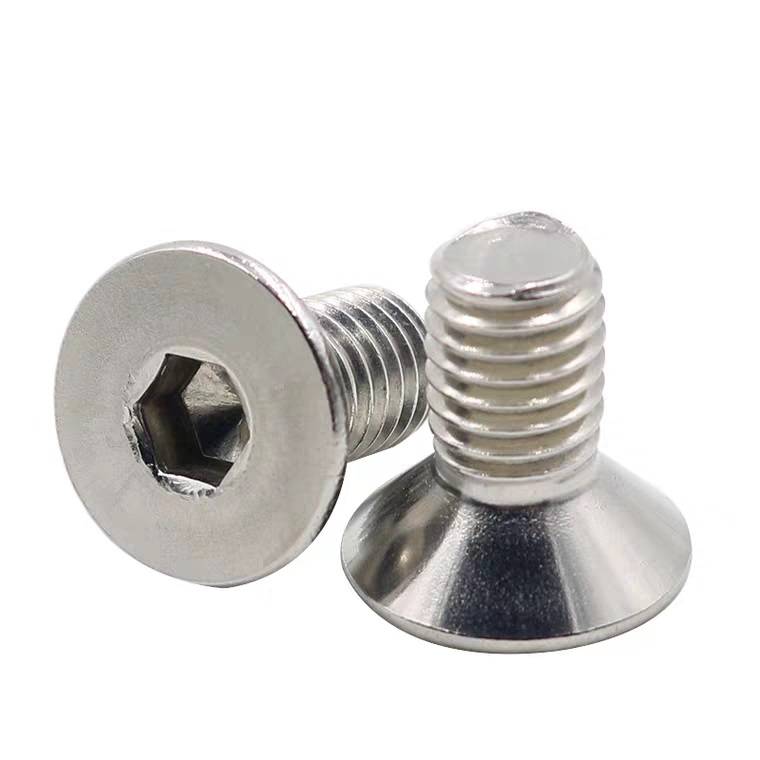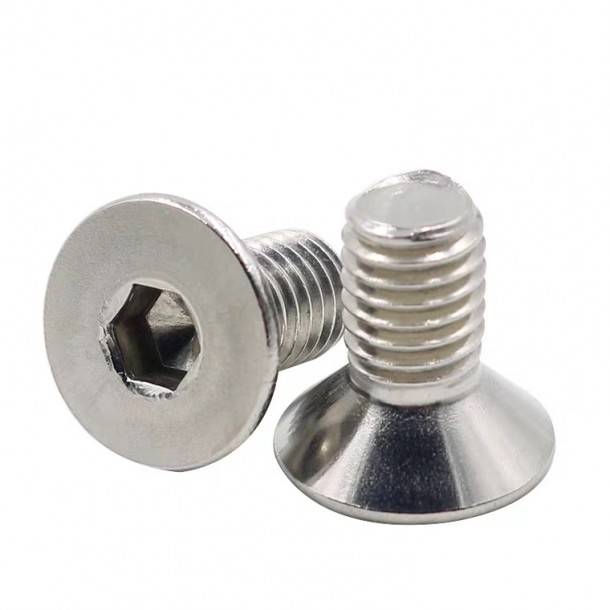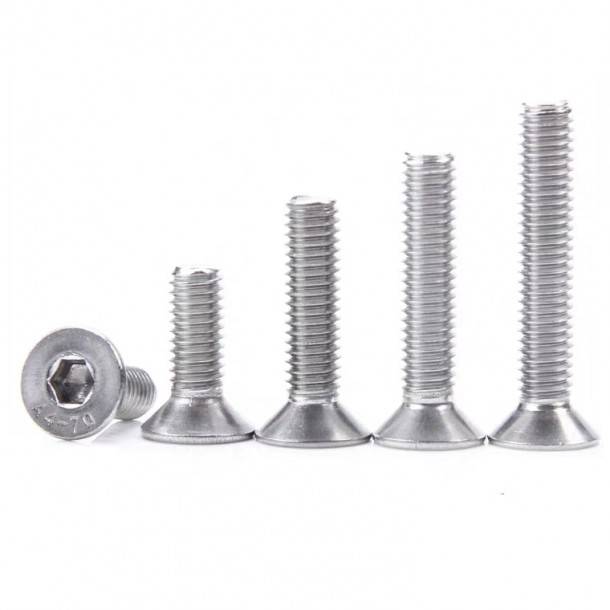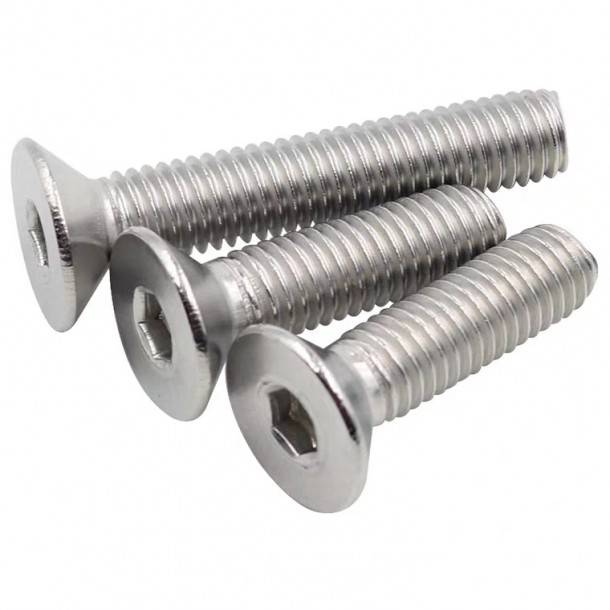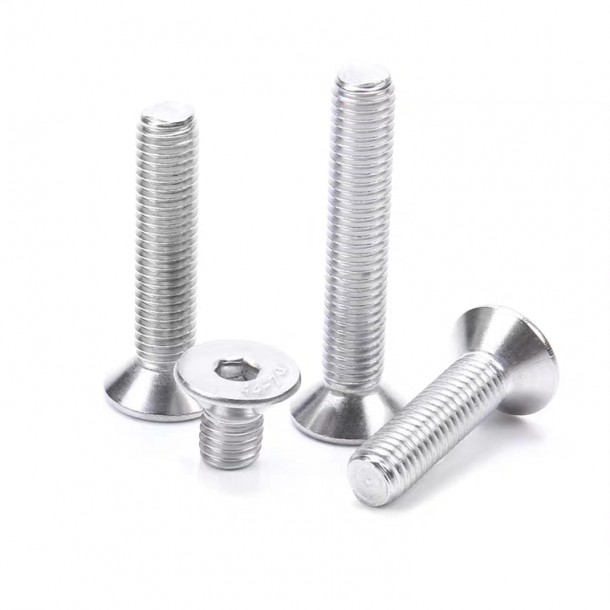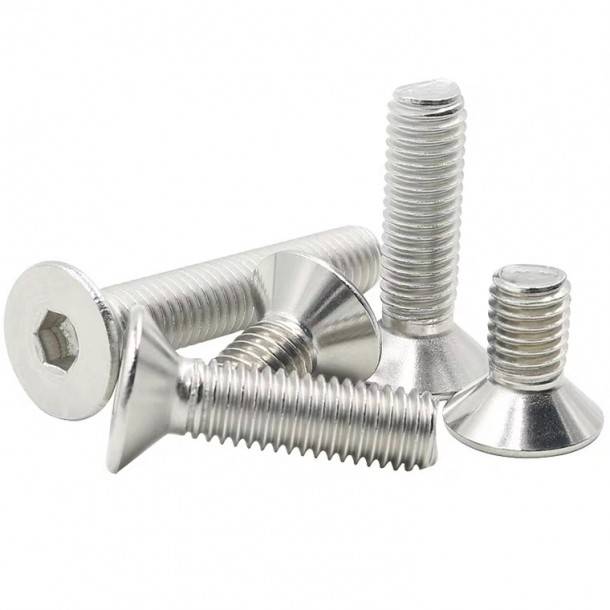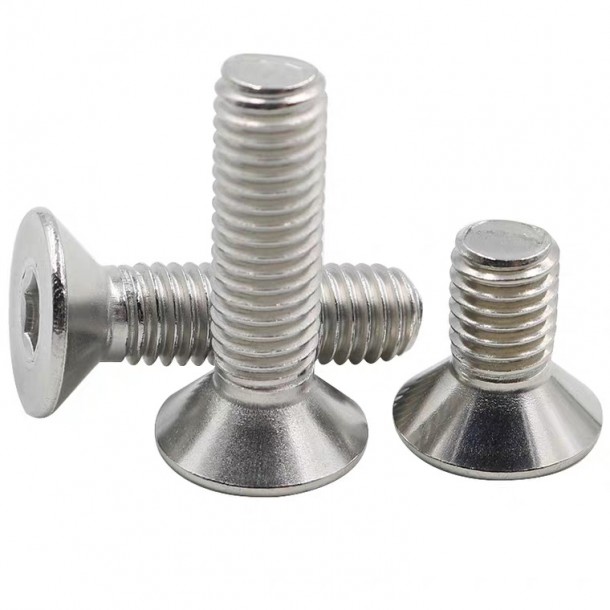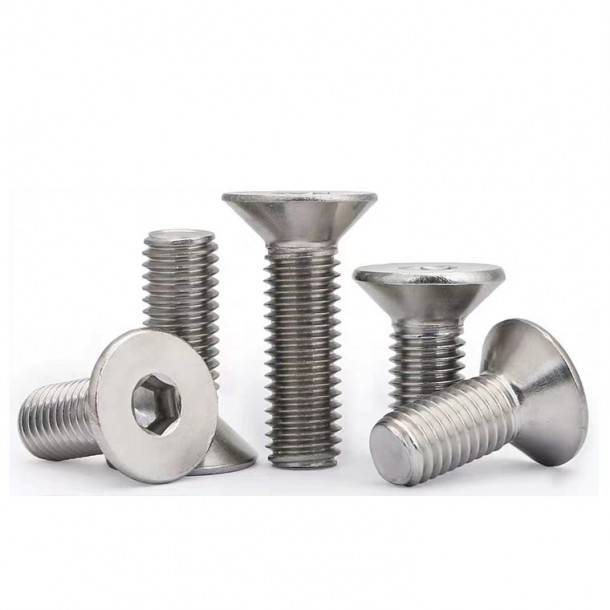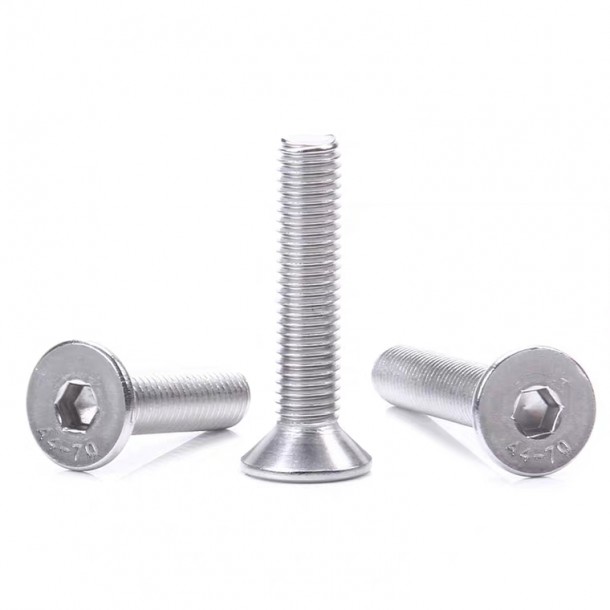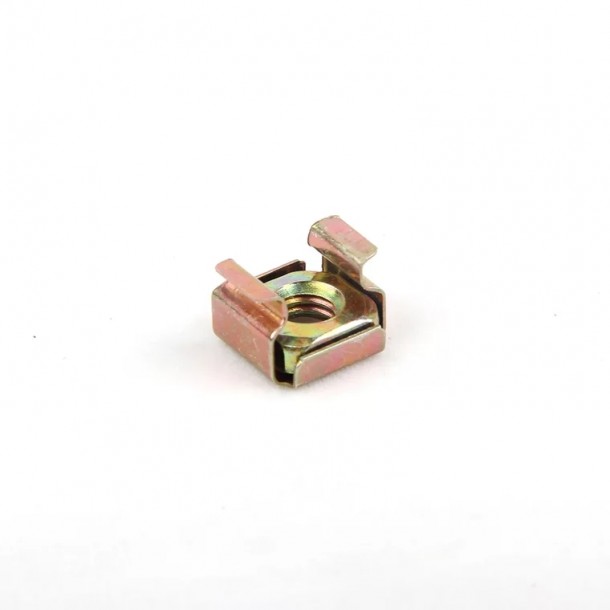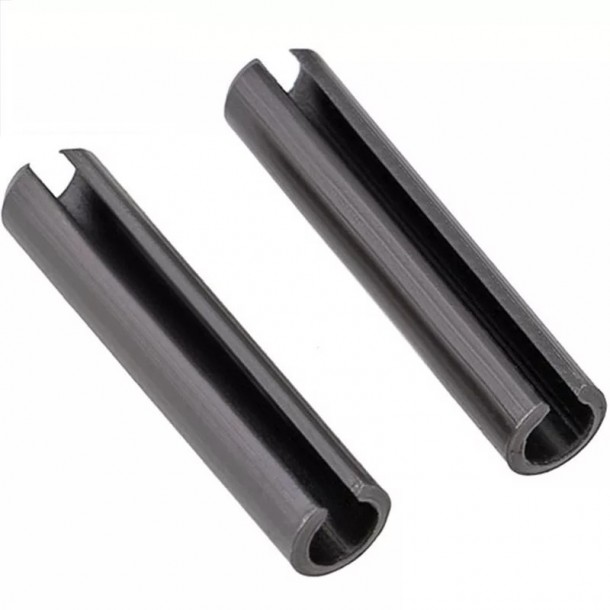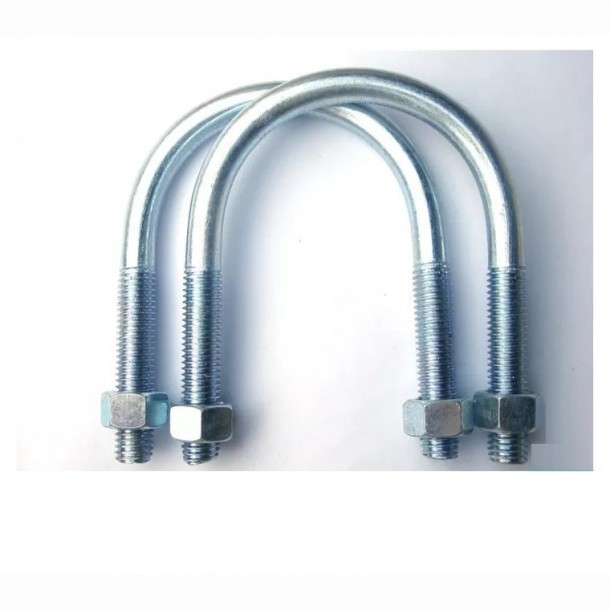Stainless Steel Hexagon Socket Countersunk Head Cap Bolt DIN 7991
Short Description:
Min.Order Quantity:1000PCS
PACKAGING:BAG/BOX WITH PALLET
PORT:TIANJIN/QINGDAO/SHANGHAI/NINGBO
DELIVERY:5-30DAYS ON QTY
PAYMENT:T/T/LC
Supply Ability:500 TON PER MONTH
Product Detail
Product Tags
Product Description:
| Product name | Hexagon Socket Countersunk Head Cap Bolt |
| Size | M3-24 |
| Length | 6-100mm or as required |
| Grade | SS304/SS316 |
| Material | Stainless steel |
| Surface treatment | Plain |
| Standard | DIN/ISO |
| Certificate | ISO 9001 |
| Sample | Free Samples |
Usage:
On the surface of the mounting hole on the connecting piece, a 90-degree conical round socket is processed, and the head of the flat machine screw is in this round socket, which is flush with the surface of the connecting piece. Flat machine screws are also used in some occasions with round head flat machine screws. This kind of screw is more beautiful and is used in places where the surface can allow a little protrusion.
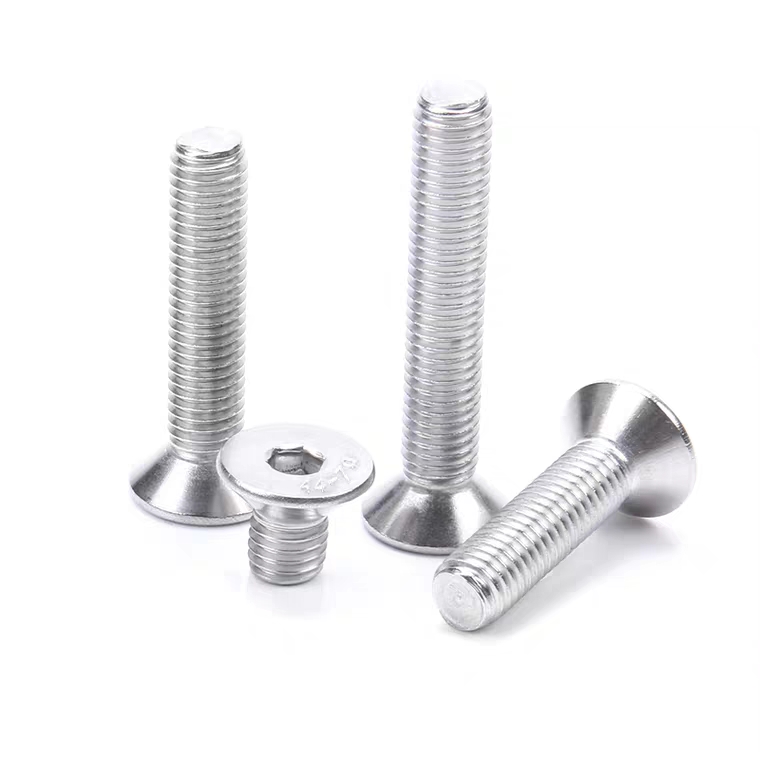
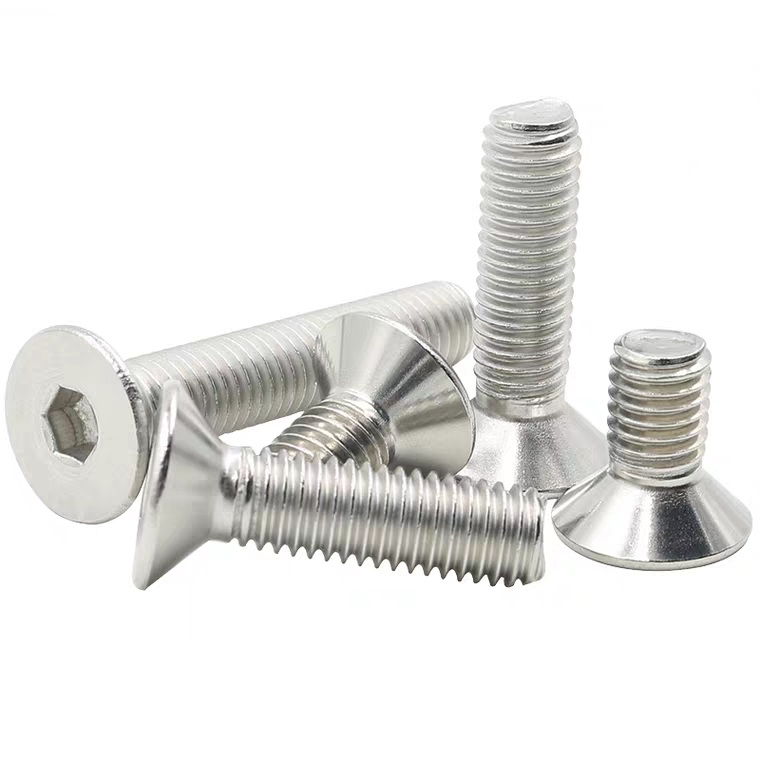
How to use?
Most countersunk screws are used in places where the surface of the part cannot be raised after installation. There are two types of parts to be fastened. The thickness of the head, after the screw is tightened, a part of the screw thread still does not enter the threaded hole. In this case, the countersunk head screw can certainly be tightened.
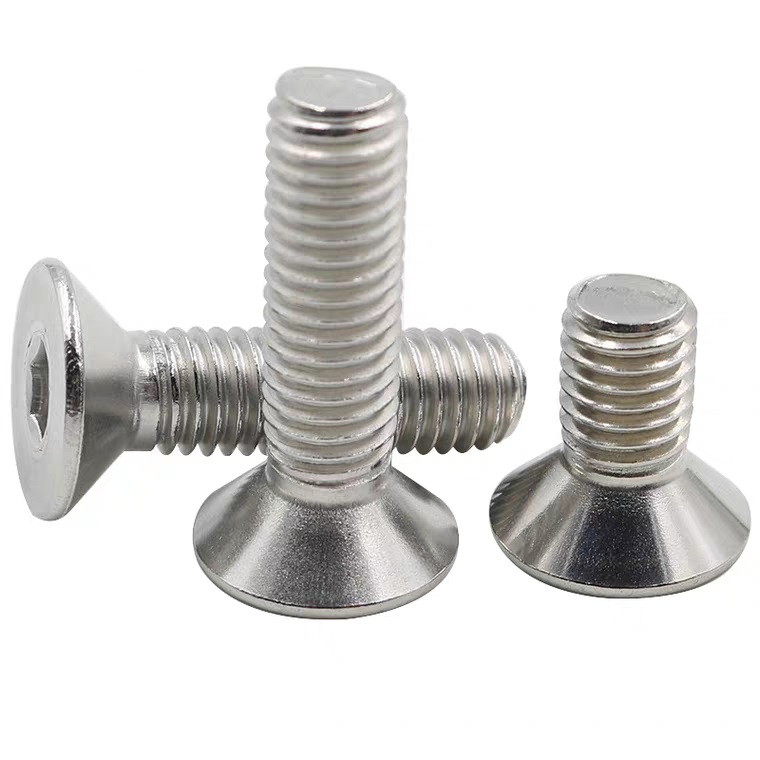
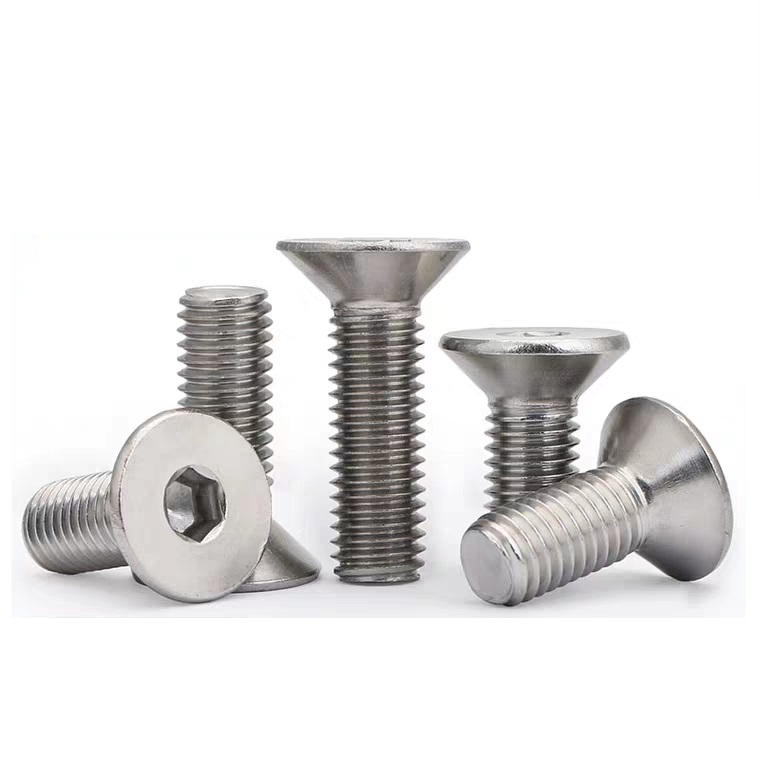
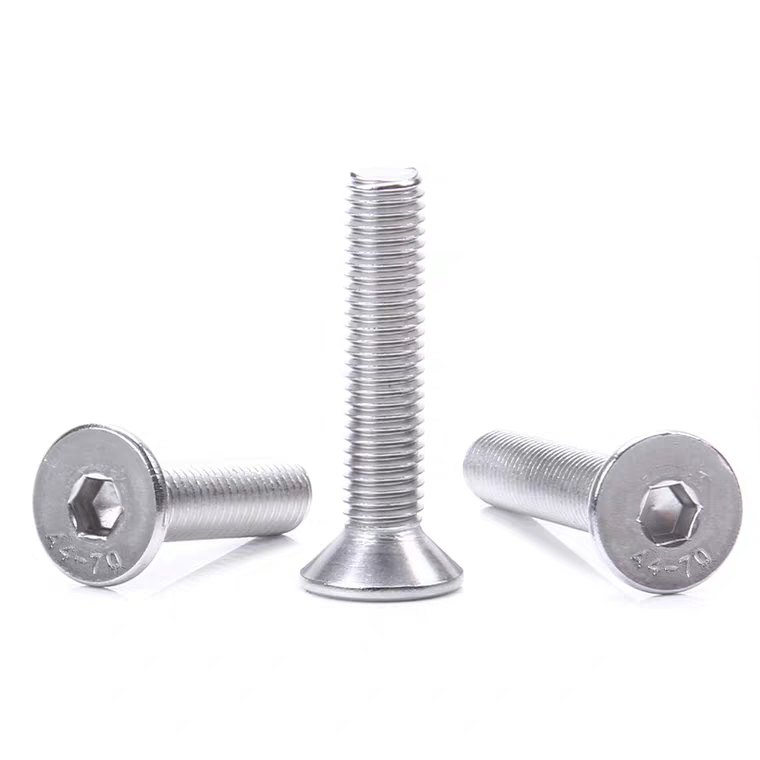
The cone of the head of the countersunk head screw has a 90 ° cone angle. Usually, the apex angle of a newly purchased drill bit is 118 ° -120 °. Some untrained workers do not know this angle difference, and often use a 120 ° drill Reaming, which results in that the countersunk head screws are not strained when tightening the countersunk head screws, but a line at the bottom of the screw head, which is one of the reasons why the so-called countersunk screws cannot hold tight.
Precautions during use:
1.The taper of the reaming hole should be 90 °. To guarantee it, it is better to be less than 90 °, not more than 90 °. This is a key trick.
2.If the thickness of the sheet metal is less than the thickness of the head of the countersunk head screw, you can change the smaller screw, or rather expand the hole smaller than expand the hole so that the diameter of the bottom hole becomes larger and the part is not tight.
3.If there are multiple countersunk screw holes on the part, be more precise during machining. Once the drill is crooked, it is difficult to see the assembly, but it can be tightened as long as the error is small, because when the screw is not very tight Large (about no more than 8mm), when there is an error in the hole distance, the screw head will be deformed due to force when tightened, or it will be tightened.
Common questions about stainless steel:
Q: Why is stainless steel magnetic?
A: 304 stainless steel belongs to austenitic stainless steel. Austenite is partially or slightly transformed into martensite during cold working. Martensite is magnetic, so stainless steel is nonmagnetic or weakly magnetic.
Q: How to identify authentic stainless steel products?
A: 1. Support stainless steel special potion test, if it does not change color, it is authentic stainless steel.
2. Support chemical composition analysis and spectral analysis.
3. Support smoke test to simulate the actual use environment.
Q: What are the most commonly used stainless steels?
A: 1.SS201, suitable for use in dry environment, easy to rust in water.
2.SS304, outdoor or humid environment, strong resistance to corrosion and acid.
3.SS316, molybdenum added, more corrosion resistance, especially suitable for seawater and chemical media.
Five advantages of stainless steel:
1. High hardness, no deformation ----- The hardness of stainless steel is more than 2 times higher than that of copper, more than 10 times higher than that of aluminum, the processing is difficult, and the production process is complicated.
2.Durable and non-rusty ---- made of stainless steel, the combination of chrome and nickel creates a layer of anti-oxidation on the surface of the material, which plays the role of rust.
3.Environmentally friendly, non-toxic and non-polluting ------- Stainless steel material has been recognized as sanitary, safe, non-toxic and resistant to acids and alkalis. It is not released to the sea and does not pollute tap water.
4. Beautiful, high-grade, practical -------- Stainless steel products are popular all over the world. The surface is silver and white. After ten years of use, it will never rust. As long as you wipe it with clean water, it will be clean and beautiful, as bright as new.
Product advantages:
- Precision Machining
☆ Measure and process using precision machine tools and measuring tools under strictly controlled environmental conditions.
- High-quality carbon steel(35#/45#)
☆ With long life, low heat generation, high hardness, high rigidity, low noise, high wear resistance and other characteristics.
- Cost-effective
☆ The use of high-quality carbon steel steel, after precision processing and forming, greatly improves the user experience.
Surface treatment:
- BLACK
☆ Black is a common method for metal heat treatment. The principle is to make an oxide film on the metal surface to isolate the air and achieve rust prevention. Blackening is a common method for metal heat treatment. The principle is to make an oxide film on the metal surface to isolate the air and achieve rust prevention.
- ZINC
☆ Electro-galvanizing is a traditional metal coating treatment technology that provides basic corrosion resistance to metal surfaces. The main advantages are good solderability and suitable contact resistance. Due to its good lubrication properties, cadmium plating is commonly used in aviation, aerospace, marine, and radio and electronic products. The plating layer protects the steel substrate from both mechanical and chemical protection, so its corrosion resistance is much better than zinc plating.
- HDG
☆ The main advantages are good solderability and suitable contact resistance. Due to its good lubrication properties, cadmium plating is commonly used in aviation, aerospace, marine, and radio and electronic products. The plating layer protects the steel substrate from both mechanical and chemical protection, so its corrosion resistance is much better than zinc plating. Hot-dip zinc has good corrosion resistance, sacrificial protection for steel substrates, high weather resistance, and resistance to salt water erosion. It is suitable for chemical plants, refineries and coastal and offshore operating platforms.
OUR PACKAGE:
1. 25 kg bags or 50kg bags.
2. bags with pallet.
3. 25 kg cartons or cartons with pallet.
4. Packing as customers' request
